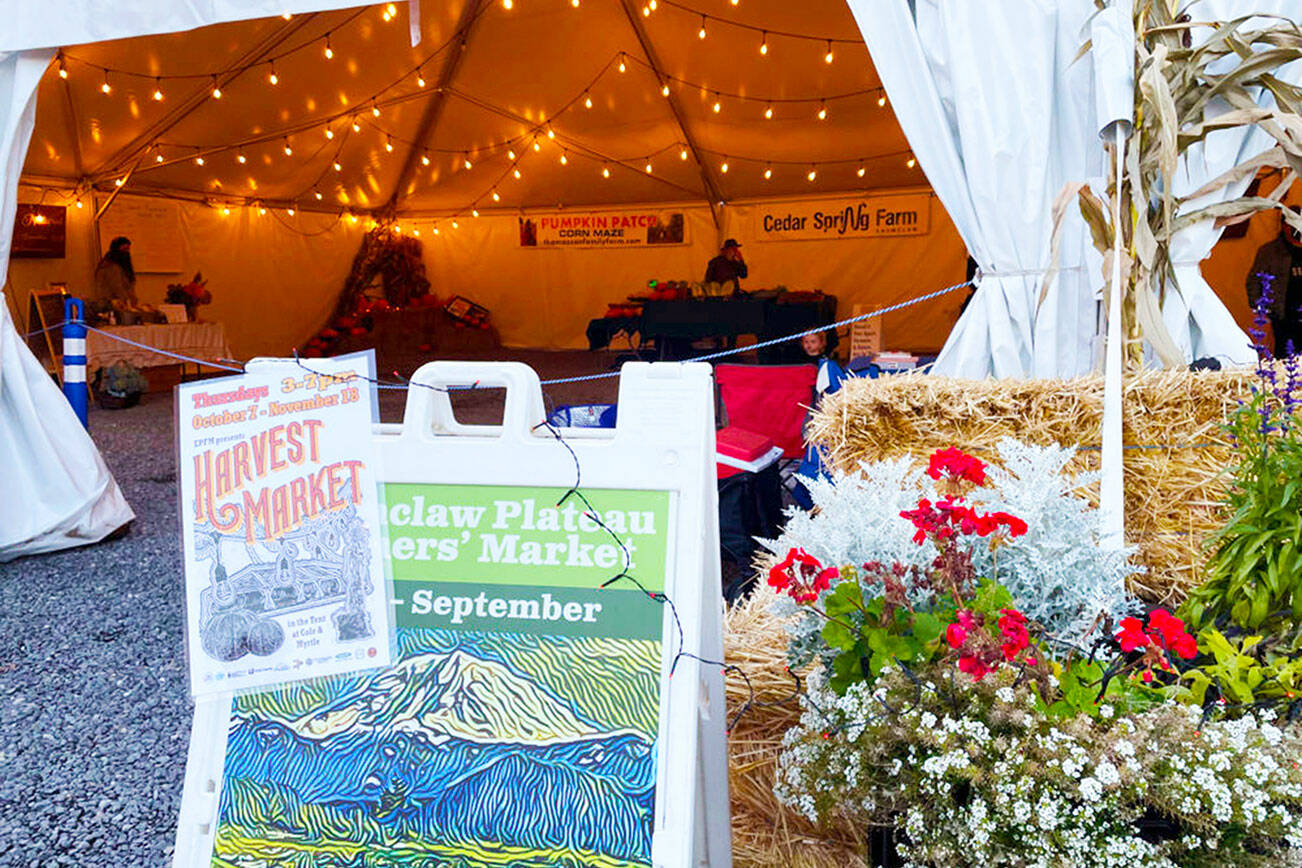September is the end of Enumclaw’s summer farmer’s market — but October and November will once again bring a fall market to Cole Street, providing you fresh food and produce for the colder months.
This year’s format is more limited than 2021; instead of being every Thursday from 3 to 7 p.m., the market expects to set up only two dates — Oct. 29 and Nov. 19 — from 10 a.m. to 2 p.m. under the big tent. These dates are still pending approval from the city of Enumclaw and Public Health — Seattle & King County.
The vendor list is also not totally set in stone, but “Currently, we have invited our summer market vendors to which most have indicated an interest,” said Enumclaw Plateau Farmers’ Market Vice President Lance Smith, adding that anyone who wishes to participate can fill out an application form at enumclawplateaufarmersmarket.org.
Vendors from last year included staples of the summer market like Fantello Farmstead Creamery (locally-made cheese), Gramma Berta’s Pantry (jams, chutnies, and more), and Beauvine Natural (local beef), as well as various local crafters and community groups.
Once dates are cemented and vendor lists are published, you can find them on the nonprofit’s website or Facebook.
FINANCIALS TO DATE
How the 2022 summer season will pan out is unclear, as weather and other factors greatly affect market sales.
That said, out of the four years EPFM has been setting up on Railroad St., 2022 appears to be on track to be the second-most profitable for vendors overall, with nearly $83,000 in sales by week 14.
By this time in 2019, market vendors made more than $105,600, partly thanks to week six, which alone brought in nearly than $14,000.
Also by week 14, vendors made almost $65,000 in 2020, and about $82,850 in 2021.
But overall vendor income isn’t the only way EPFM measures success. Every year, the market allows people using Farmers Market Nutrition Program credits and Supplemental Nutrition Assistant Program credits to help people access fresh and local foods; data appears to show that, for the most part, more people have been using the programs at the local market to buy their food as the market went on.
Even more popular than those programs, though, was the Power of Produce (PoP) program, which aimed to encourage children to learn about locally-grown fruits and vegetables by giving them credits to spend with various vendors (who were then reimbursed later).
While about $1,350 was provided by the FMNP and SNAP programs by Sept. 1 this year, the PoP program has brought in more than $2,500, which Lance said was a “huge success”.
“It was fun to engage with kids and get them to try new things like salad turnips, kohlrabi, the different squashes that one child said looked like a jellyfish,” added Jayce Behrendt, EPFM treasurer. “It’s a challenge to talk them out of using all their tokens on the luscious berries.”


